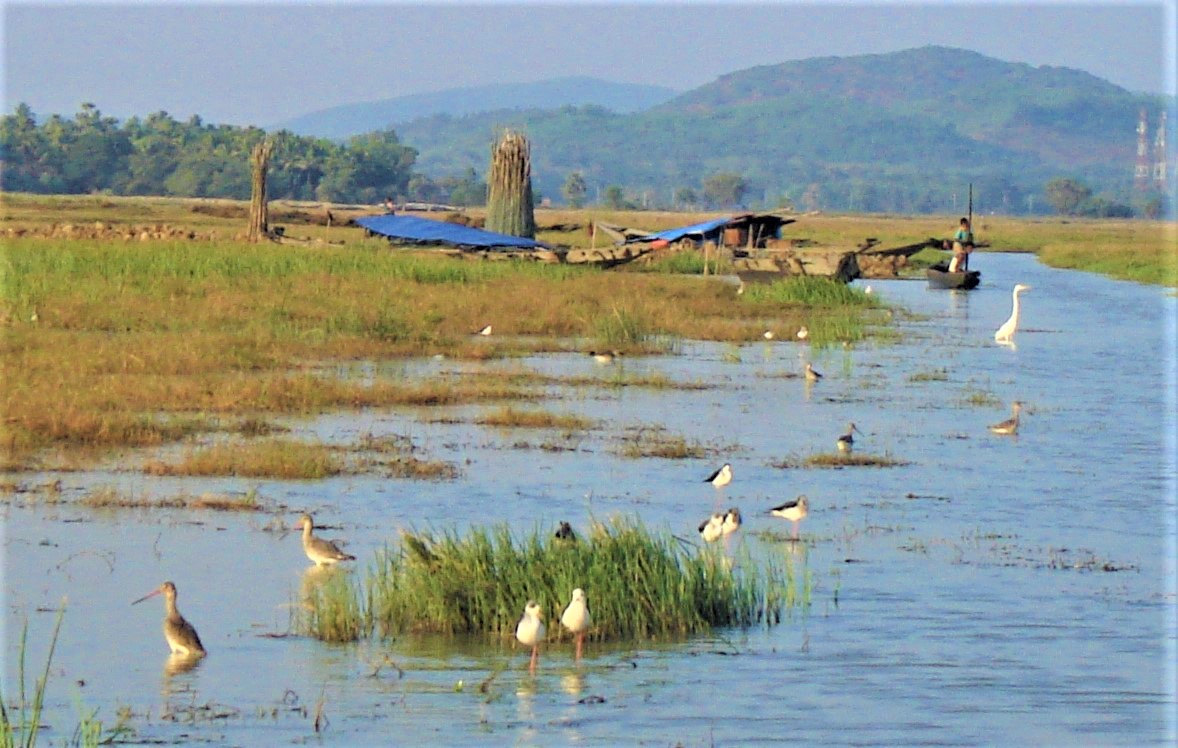
Conserving wetlands biodiversity: Bending the biodiversity loss curve
-
Species
May 22, the International Day for Biological Diversity, is being celebrated this year amidst the shadows of the COViD-19 pandemic which has forced us to rethink our relationship with nature.
While economies have taken a hit and the country stares into one of its worst recessions, nature has revitalized. Images of improved water quality in river Ganges and Yamuna, rejuvenated wetlands, and reappearing waterbird congregations abound on the internet and social media, are reminding us of a fact the conservationists have long been crying hoarse to communicate – our economic development pathways are not consistent with conservation.
Wetlands are home to highly diverse species, yet are also one of the most threatened. Species dependant on wetlands, such as amphibians and waterbirds are undergoing rapid decline. In India, as per our estimates, nearly one-third of natural wetlands have been lost in the last three decades alone. One in four waterbird species that we see in Indian wetlands has a declining population trend.
Protected areas have been the central pillar for biodiversity conservation in India. Our 870 protected areas include over 8,400 wetlands of area >2.5 ha within their boundaries, spanning an area of 3.2 million ha. Decades of work on Indian birds and passion of conservationists such as Salim Ali have laid the foundation of a network of wetland protected areas supporting large congregation of waterbirds. Vedanthangal, Keoladeo, Khijadiya and Ranganathittu were designated as protected areas under the colonial laws and regulations.
However, the challenge today is to look beyond protected areas. Conserving biodiversity by isolating large swathes of land has political consequences and no longer tenable. Instead, we will need to look at conservation models built on the principles of co-existence. Evidences from Mangalajodi (in Chilika, Odisha), Doyang (Nagaland), Keshopur-Miani (Punjab) and several others point out that collaborative governance approaches are indeed possible. The need of the hour is to bring such thinking in the mainstream and promote adoption of participatory models. Local communities are at the frontline of such governance approaches, and it is vital that their needs, aspirations, views and capacities are taken into account while framing management actions.
It is also a high time that India adopts a specific policy on wetlands. Wetlands are yet to be recognized as a distinct land-use category in the country, and this loophole is often exploited to convert wetlands for more productive usages such as agriculture and housing. By adopting a policy such as ‘no loss of natural wetlands’, we can ensure wetland loss and degradation is halted and reversed. By linking the state’s performance on the front of wetlands conservation to fiscal transfers, a policy stimulus can be generated for the states to become responsible custodians of these ecosystems.
As we reopen our economies, it is essential to keep in mind that economic development at the cost of biodiversity loss would be a bad bargain, and would come to haunt us a later stage (in the forms that we may not have imagined).
Read our thought piece on the Ramsar Site network and biodiversity conservation here
